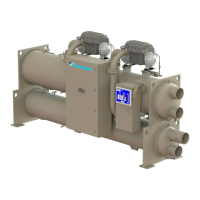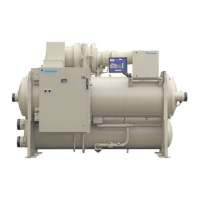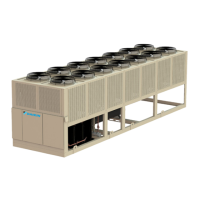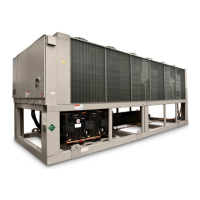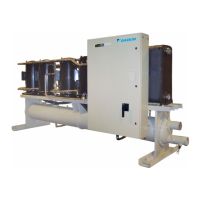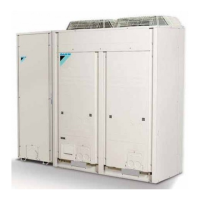INSTALLATION
NAVIGATOR WWV/TWVDAIKIN APPLIED
6
Lifting Guidance
Daikin Applied equipment is designed to withstand the loads of
the lifting and rigging process resulting from ASME Standard
P30.1 - Planning for Load Handling Activities or equivalent.
Lifting guidance is intended for installations of newly delivered
equipment. If moving previously installed equipment for re-
location or disposal, consideration should be given to unit
condition. Equipment should also be drained as unit weight and
center of gravity values do not reect the addition of water for
lifting.
DANGER
Improper rigging, lifting, or moving of a unit can result in unit
damage, property damage, severe personal injury, or death.
See the as-designed, certied dimensioned drawings included
in the job submittal for the weights and center of gravity of the
unit. If the drawings are not available, consult the local Daikin
Applied sales oce for assistance.
Installation is to be performed only by qualied personnel who
are familiar with local codes and regulations, and experienced
with this type of equipment. Lifting equipment and mechanisms
must be determined by the Lifting Director per the current version
of ASME Standard P30.1 or equivalent and must be suited for the
load capacity. Daikin Applied is not a licensed nor certied rigging
specialist. Therefore it is the customer’s responsibility to consult a
certied rigging contractor to rig, lift, and move components and
subcomponents properly and safely as needed.
CAUTION
Forklifts may not be used to lift or move Navigator units as the
method may result in unit damage.
CAUTION
When around sharp edges, wear appropriate Personal Protective
Equipment (PPE), such as gloves, protective clothing, foot wear,
eye protection, etc. to prevent personal injury.
Lifting Brackets
Lifting bracket designs vary from product to product. Rules of
engagement with the lifting brackets are the same regardless of
the bracket type. For Navigator units, a typical lifting bracket with
2ʺ (51 mm) diameter holes found on the sides of the unit base
are illustrated in Figure 1. See the as-designed certied drawings
for specic lifting points on this product model.
Engagement with each bracket is to be as close to vertical as
possible. The maximum allowable lift angle from the vertical is
30° as shown in Figure 2. If the lift angle shifts beyond 30° from
vertical on any of the lift points, the lift shall not proceed until a
plan and rigging can be secured that will correct the angle of lift.
WARNING
The lifting angle must not go beyond 30 degrees from vertical or
the unit can become unstable which may result in unit damage,
property damage, severe personal injury, or death.
Figure 1: Illustration of Lifting Bracket and Allowed Angle for
Lifting
Figure 2: Illustration of Allowed Angle Label
Lifting Equipment
Lifting equipment is supplied by the user or their designate.
This is typically selected around the unit certied information
of the equipment to be lifted and the available lifting equipment
planned to be at the site where the lift is to take place. It is the
responsibility of the Lifting Director to follow a standard practice
of lift planning and equipment selection, like that found in the
ASME P30 series of standards. Lifting plan and equipment must
ensure that the only contact with the unit is at the lifting brackets.
Straps, chains or spreader bars that are likely to be used shall
not come in contact with the unit.
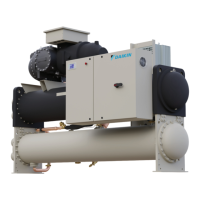
